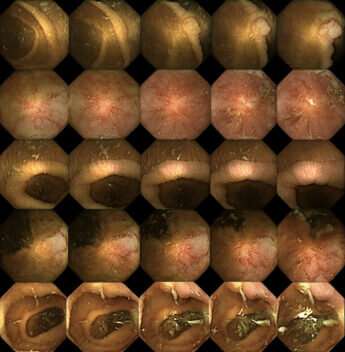There are many reasons to choose a capsule camera examination over traditional alternatives such as colonoscopies and gastroscopies
However, there is just one catch: The challenges that for more than 20 years have prevented this smart technology from replacing more invasive examinations have proved more difficult to overcome than many might have hoped and believed.
Here are two research pathways that will change this—and the explanation of how they are connected.
The intestines minute by minute
The capsule spends an average of eight hours traveling through the digestive system. During its journey, it covers about the same number of meters and records more than 50,000 images.
“It goes without saying that analyzing such a wealth of data is a very resource-intensive task,” says scientist Pål Anders Floor. He works at the Department of Computer Science at NTNU in Gjøvik.
In recent years, he has been looking into the possibility of using a capsule camera to create a three-dimensional representation of the intestine. He has published his work in IEEE Access.
“In combination with machine learning, a 3D reconstruction can quickly draw the specialist’s attention to possible diseases and other anomalies. As a result, no one has to sit and stare at the capsule camera’s tedious journey through the digestive tract minute by minute,” says Floor.

